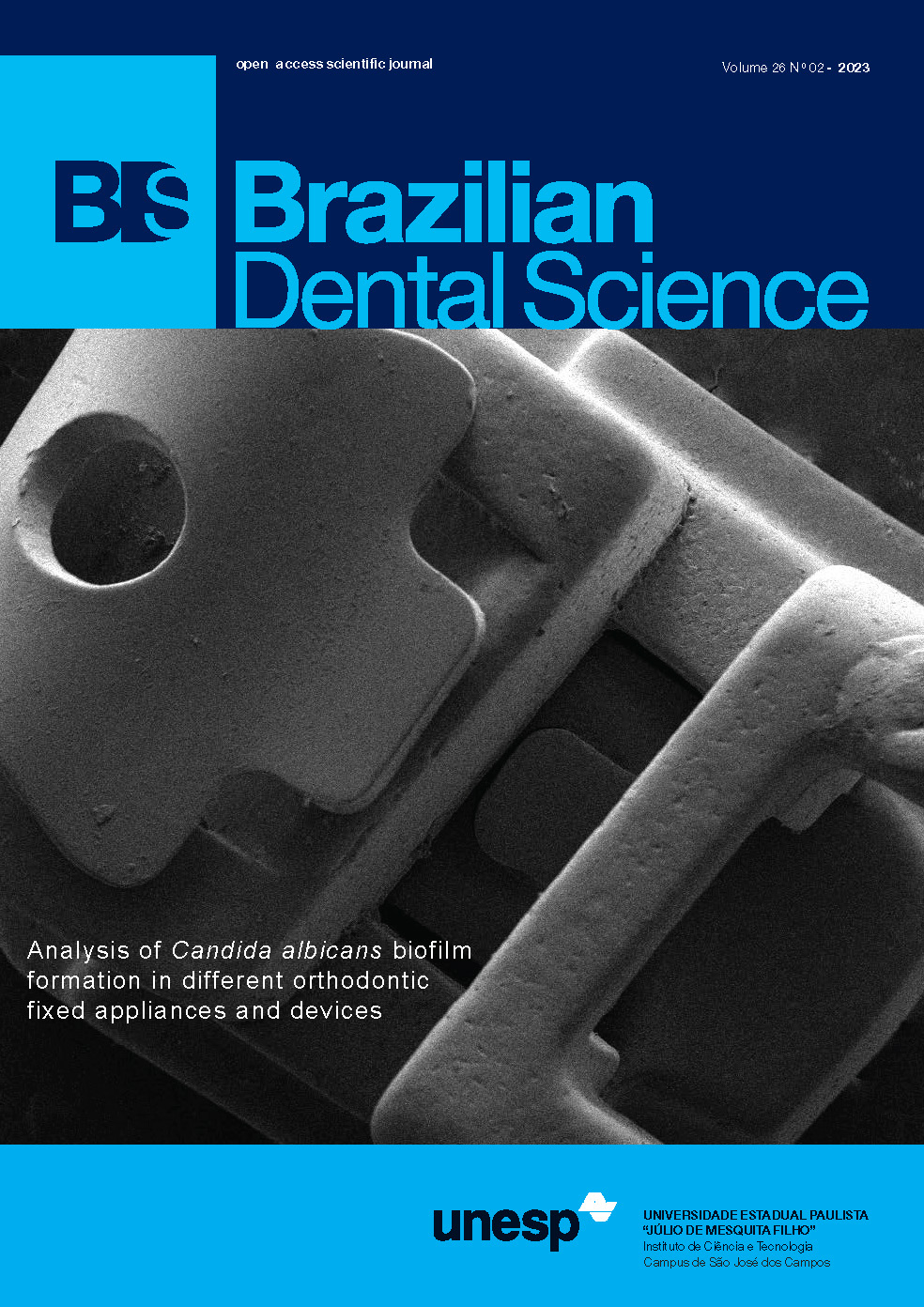Frequency of central odontogenic tumors: a retrospective study in an Iraqi population utilizing 2022 WHO head and neck tumors classification
DOI:
https://doi.org/10.4322/bds.2023.e3645Abstract
Objectives: Odontogenic tumors occupy an important position among head and neck tumors. Although, rarely encountered in medical practice but they considered increasingly challenging lesions for the clinicians due to their overlapping clinical and histopathological features. This study was designed to determine the relative frequency of central odontogenic tumors in an Iraqi population by utilizing 2022 WHO tumor classification. Material and Methods: Sixty cases of central odontogenic tumors from a total of 1869 case records were retrieved retrospectively from the file archive of the histopathology laboratory in Baghdad medical city from the period of 2016 to 2021. For each individual case, data regarding age, gender, location, and tumor type were collected and analyzed. Results: odontogenic tumors constituted 3.2% of the total cases analyzed mostly benign. The male to female ratio was 1/1. The age of the patients ranged from 11 to 75 years. Most cases were recorded in the third and fourth decades of life (n=31, 51.6%). The most common benign and malignant tumors were ameloblastoma and ameloblastic fibrosarcoma respectively. Most of these tumors located in the mandible (n= 45, 75%). The most common mandibular tumor was ameloblastoma followed by ameloblastic fibroma, and odontogenic myxoma. Regarding maxillary tumors, the predominant tumor was ameloblastoma followed by ameloblastic fibroma, ameloblastic fibrosarcoma, and clear cell odontogenic carcinoma. Conclusions: Odontogenic tumors in an Iraqi population occurred more commonly in the mandible and showed no sex predilection. Most cases were diagnosed in third and fourth decades of life and ameloblastoma was the most frequent odontogenic tumor. The relative frequency of malignant odontogenic tumors was 11.67% of all cases studied mostly ameloblastic fibrosarcoma.
KEYWORDS
Odontogenic tumors, WHO tumor classification, Frequency, Ameloblastoma.
Downloads
Published
How to Cite
Issue
Section
License
Brazilian Dental Science uses the Creative Commons (CC-BY 4.0) license, thus preserving the integrity of articles in an open access environment. The journal allows the author to retain publishing rights without restrictions.
=================




























